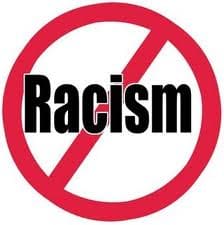“Got to be taught”… and not just in South Pacific
 ‘Got to be taught’ I hadn’t known I was living in a segregated society
‘Got to be taught’ I hadn’t known I was living in a segregated society
One woman remembers when the civil rights movement came to her neighborhood, and the consequences for her.
“You’ve got to be taught/ To be afraid/ Of people whose eyes/ Are oddly made/ And people whose skin is a different shade./ You’ve got to be carefully taught.”
She continues …
Long before anyone ever imagined Black History Month, the fight for many Americans was for legal equality and access. I was witness to one of these historic struggles, although I had no idea of its significance at the time.
Gwynn Oak Amusement Park was one of my favorite places when I was a small child in Baltimore. It featured three roller coasters, a haunted house ride that scared the living daylights out of me, a carousel and many other kiddies’ attractions. My memories are happy but vague, except for the final one.
I hadn’t known I was living in a segregated society any more than a fish knows it’s in water. My world — neighborhood, church, school, stores — were all white in the early 1960s. But times were changing, as we all know now, and the civil rights movement was on its way to Gwynn Oak.
This little amusement park, just across the Baltimore County line from the northwest corner of the city, had been a target for integration since the mid-1950s, with occasional picketers and protesters showing up. If they were there in the early ’60s when I started going, I never saw them.
But I sure saw them on Aug. 28, 1963, when they finally integrated the park. My mother took me to Gwynn Oak that day, but not for the rides. She was interested in the excitement on the outside.
Only 8, I didn’t know what was going on. All I know is what I felt — palpable tension in the air. The street leading up to the park was lined on either side with mostly white people and police officers. Everyone stood looking down the street, anticipating something.
The wait seemed long, and I was frightened about what was going to happen. Finally, a long line of black people, adults and children, appeared and began walking toward Gwynn Oak. I had never seen so many black people and the air of them-versus-us terrified me. I wanted to leave, but my mother wasn’t going to miss a thing. I felt small and vulnerable in that crowd, and worried that fighting was going to break out at any minute, even though I don’t remember any harsh words or gestures.
This day was the quiet culmination of one that had occurred the month before, on July 4. That day brought hundreds of peaceful demonstrators to the park. Many where clergy people, white and black, from states up and down the East Coast. It was the first Civil Rights protest for one young man, Michael Schwerner, and sadly, one of his last. He would be killed by the Ku Klux Klan the following year in Mississippi along with Andrew Goodman and James Chaney at the start of Freedom Summer.
I was unaware of the July event. On the day I remember, the black people didn’t stop at the door. They entered the park, never to be kept out again. For me it was just the opposite. As we walked away later, my mother said, “Well, you’ll never go there again.”
And she was right, I was never taken there again, nor was any child I knew. Most white people didn’t consider the idea that they could share Gwynn Oak. They just abandoned it to the black people. It had been a segregated park, and it remained one, just with different patrons, and now the segregation was by choice.
As we drove home, I pictured a little black girl my age going through the park for the first time. I mentally journeyed with her, wondering what ride she was on and what she would see next. I was genuinely happy and excited for her. As we got closer to home, though, it really began to hit me that I would never go to Gwynn Oak again. I didn’t feel angry or jealous, just sad. It wouldn’t have occurred to me any more than it did to the adults that we could share the park. But I remember a stirring in the back of my mind that wondered why it had to be either/or.
In the years that followed, attendance fell off, and the property eventually was purchased by developers. Life was changing in more ways than just integration. Amusement parks became big, elaborate ventures and turned into day trips a long ride away on the highway. Gone were the little attractions on the other side of town that thrilled children for a couple of hours on a hot summer night. Gwynn Oak’s rides were too quaint for the new operations. They were all sold, and my beloved little carousel moved south where for many years it was in operation on the National Mall in Washington, D.C.
Gwynn Oak’s integration was one tiny link in the mighty chain of the Civil Rights Movement. I was there for it. Unfortunately, it took me years to reevaluate the messages I learned that day, for I had been “carefully taught.”
“You’ve got to be taught/ Before it’s too late/ Before you are six or seven or eight/ To hate all the people your relatives hate./ You’ve got to be carefully taught.”
Retta Blaney is an award-winning journalist and the author of “Working on the Inside: The Spiritual Life Through the Eyes of Actors,” which features interviews with Kristin Chenoweth, Edward Herrmann, Liam Neeson, Phylicia Rashad, Vanessa Williams and many others. Her email is blaneyl@stjohns.edu.
Courtesy of the author and The Baltimore Sun
Tags: Racism







0 Comments